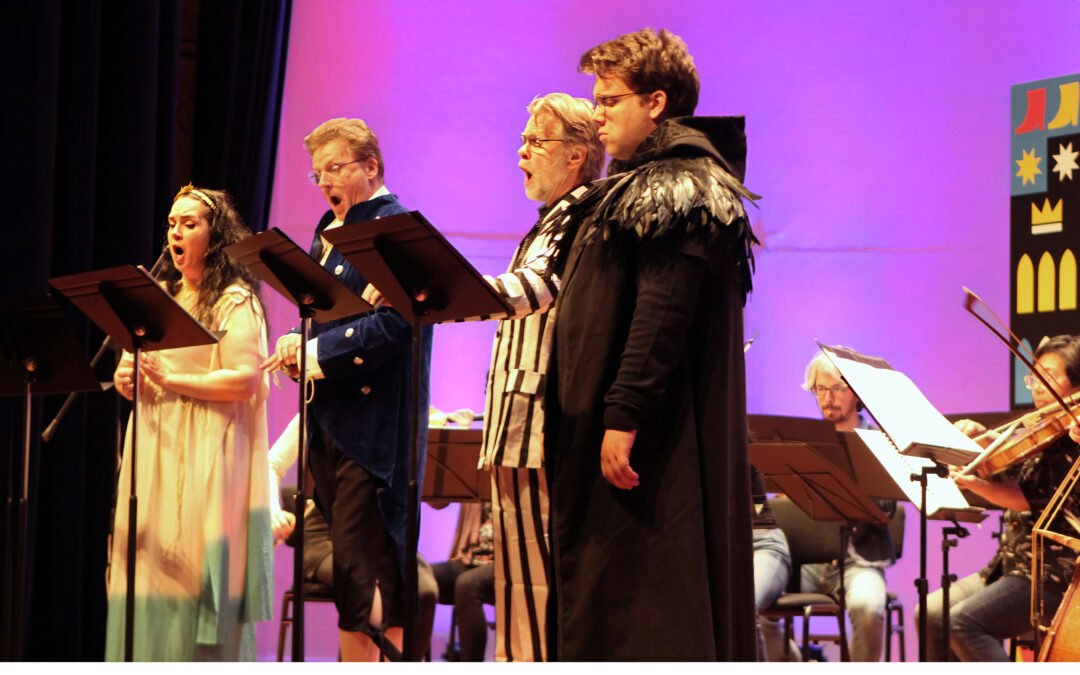Review from Place De l’Opera
Many a musicologist and music historian dream of finding an unknown piece of a well-known composer. However, the chance of this is becoming less and less, especially with the big names such as Beethoven and Mozart. Everything by them seems to have been discovered, implemented and provided with scientific commentary. Nevertheless, the search is sometimes unexpectedly rewarded, which recently happened to René Seghers of the 401NederlandseOperas foundation when he saw Beethoven’s sketches for his unfinished first opera Vestas Feuer, but above all the original libretto by Emanuel Schikander (Die Zauberflöte). There appeared to be enough musical and text material to make the reconstruction of no less than two arias and to complete the instrumentation of the opening scene.
The world premiere took place on 10 June in De Hanzenhof, 219 years after the composer set aside his sketches to devote himself fully to his new project, the opera Fidelio. The news about the reconstruction of the operatorso by Cees Nieuwenhuizen created certain expectations. Could we already recognize the Beethoven of his great works in music, or was the composer right to never look back at his notes again?
The result turned out to be very rewarding and exceeded all expectations. The sketches, however brief, certainly sounded ‘Beethovenian’ and gave a good impression of Beethoven’s approach to dramatic developments of the plot. The all-conquering love, diabolical intrigue, a lingering family feud, poisonous jealousy, a few successful murders and the other dangers of daily Roman life inspired the 33-year-old composer to energetic, fiery and impetuous music.
The four soloists really enjoyed their parts. The Flemish tenor Timothy Veryser presented a convincing slave Malo with the aria “Hör, rache-Götter mir!” In this he is torn by jealousy and was well on his way to becoming the personification of evil. The soprano Renate Arends had only a few minutes to sing about the sad fate of Sericia, who had been disowned by the emperor, in her aria “Ich flieh zum heil’gen Hain”, but immediately made a big impression with her radiant voice. The fiery duet ”Liebe Freundin, lebe wohl” by the soprano Barbara Schilstra and the tenor Marcel Reijans as Volivia and her beloved Sartagones, was without doubt dramatic and full-blooded. As Volivia’s father Porus, the baritone Nanco de Vries added his characterful heroic voice in “Halt ein” and the terzet “Nie was ich zo froh wie Heute”.
The performance of Vestas Feuer in Zutphen is an ‘operatorso’; a reconstruction and orchestration by Cees Nieuwenhuizen based on original Beethoven sketches.
The two arias from Vesta Feuer that were presented in Zutphen are completely new reconstructions and have never been orchestrated before, but there are different (orchestrated or not) versions of the opening scene of Vestas Feuer that were made on the basis of the same sketches. In most cases, these are not reconstructions, but versions that have only used the existing material and have orchestrated orchestrations based on the prevailing or customary notions of Beethoven.
The existence of Vestas Feur had been known since the second half of the 19th century, when in 1865 the Beethoven biographer Alexander Wheelock reported that the Gesellschaft der Musikfreunde contained a sketch with important details of an opera scene. The first issue was in 1872 and in 1930 Raoul Biberhofer confirmed that he was concerned with the opening scene of Vestas Feur. The first complete edition was published in 1953 by the musicologist Willy Hess. A later edition of CLayton Westrman was published in 1983 and was first performed at the Spoleto Festival. Later recordings of Vestas Feuer are performances that all include only the first scene according to Beethoven’s orchestral directions. The performance in Zutphen places Vestas Feuer in a broader context, by adding two complete arias based on the libretto by Emanuel Schikander and other previously unused parts from Beethoven’s sketches.

